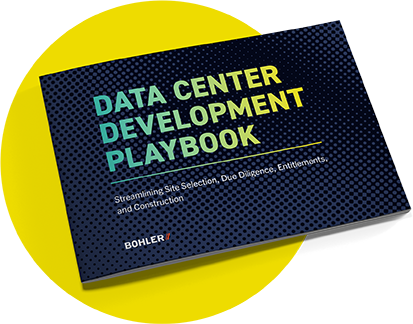Stay in the Know
Get our insights and latest news straight to your inbox.
As we digitalize our lives and more companies convert to cloud-based systems, the demand for physical space to store and protect data skyrockets.
Development of data centers to house telecommunications and IT infrastructure was trending pre-COVID-19 and has been exponentially accelerated by the pandemic and transition to hybrid work environments.
The market to serve this unmet demand is both expensive and competitive, and developers need to move quickly to stay ahead. Identifying a suitable site with enough space, the right zoning, and proximity to necessary utilities can be challenging. However, the Southeast is shaping up to provide prime data center development opportunities. It’s an expanding region for data center owners and operators.
I recently joined a panel of industry experts at Bisnow’s DICE Southeast conference to discuss what makes the region desirable for data center development.

Did you know? Large sites often require their own substation to deliver current, giving the end-user more control, and enabling faster market delivery.
Tip for Developers: Since the type of use is new to many municipalities, local codes may lack clarity on data center development. Explaining data center operations to the community and local agencies can help to move the project forward. While data centers can be a significant source of tax revenue, they do not increase traffic or overload the schools. Engage a civil engineering consultant and land use attorney who can help determine the project’s zoning needs and keep it moving.
Through Bohler’s extensive experience in the Loudoun County data center market, we understand the speed-to-market, utility, and space requirements for desirable facilities. Click here for more information on how to evaluate a site for data center development, and what tools are available to help developers move data center projects forward faster.
Considering the Southeast for your next data center development? Connect with our team.
Get our insights and latest news straight to your inbox.